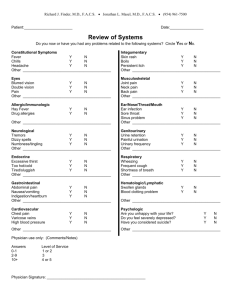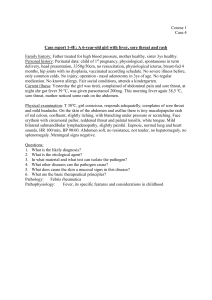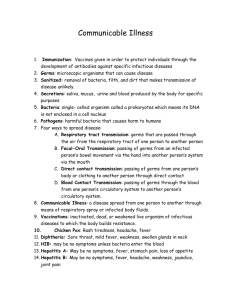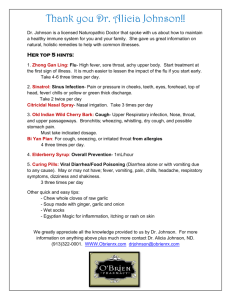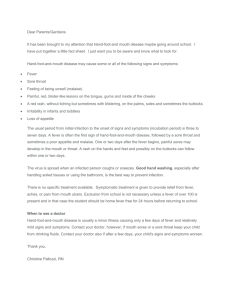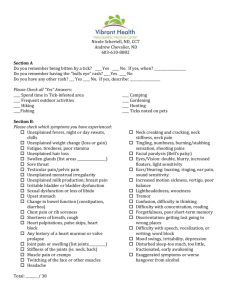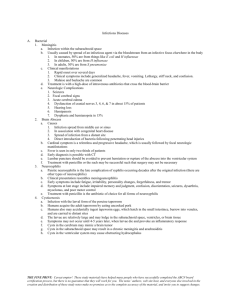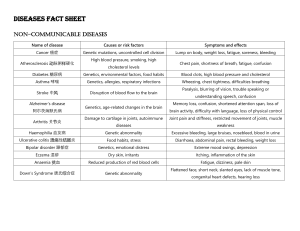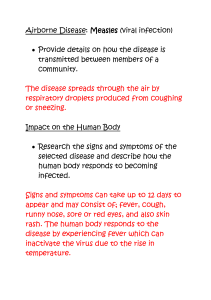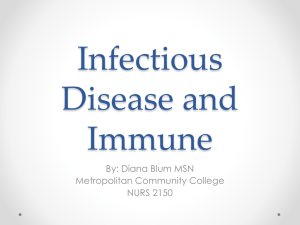Types of Pathogens: Bacterium – single celled organism. Can live
advertisement
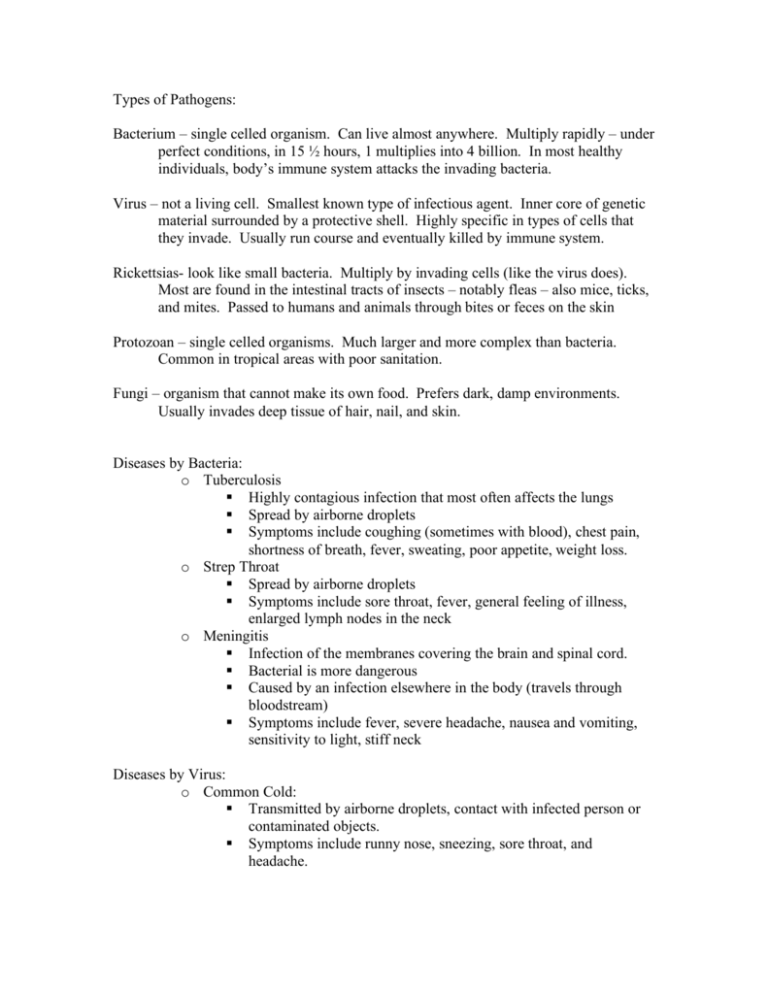
Types of Pathogens: Bacterium – single celled organism. Can live almost anywhere. Multiply rapidly – under perfect conditions, in 15 ½ hours, 1 multiplies into 4 billion. In most healthy individuals, body’s immune system attacks the invading bacteria. Virus – not a living cell. Smallest known type of infectious agent. Inner core of genetic material surrounded by a protective shell. Highly specific in types of cells that they invade. Usually run course and eventually killed by immune system. Rickettsias- look like small bacteria. Multiply by invading cells (like the virus does). Most are found in the intestinal tracts of insects – notably fleas – also mice, ticks, and mites. Passed to humans and animals through bites or feces on the skin Protozoan – single celled organisms. Much larger and more complex than bacteria. Common in tropical areas with poor sanitation. Fungi – organism that cannot make its own food. Prefers dark, damp environments. Usually invades deep tissue of hair, nail, and skin. Diseases by Bacteria: o Tuberculosis Highly contagious infection that most often affects the lungs Spread by airborne droplets Symptoms include coughing (sometimes with blood), chest pain, shortness of breath, fever, sweating, poor appetite, weight loss. o Strep Throat Spread by airborne droplets Symptoms include sore throat, fever, general feeling of illness, enlarged lymph nodes in the neck o Meningitis Infection of the membranes covering the brain and spinal cord. Bacterial is more dangerous Caused by an infection elsewhere in the body (travels through bloodstream) Symptoms include fever, severe headache, nausea and vomiting, sensitivity to light, stiff neck Diseases by Virus: o Common Cold: Transmitted by airborne droplets, contact with infected person or contaminated objects. Symptoms include runny nose, sneezing, sore throat, and headache. o Influenza Transmitted by airborne droplets Symptoms include chills, fever, headache, muscle aches, weakness o Encephalitis Inflammation of the brain Usually caused by a bite of an infected mosquito Starts with a headache and fever, untreated can progress to hallucinations, paralysis, loss of consciousness, coma o Meningitis Infection of the membranes covering the brain and spinal cord. Viral is more mild Caused by an infection elsewhere in the body (travels through bloodstream) Flu like symptoms o Mononucleosis Also known as the “kissing disease” Spread by direct contact touching, sharing food/drinks Symptoms include chills, fever, sore throat, fatigue, swollen lymph nodes Complete bed rest is needed in the care of mono o Hepatitis A/B/C Inflammation of the liver Symptoms include Jaundice (yellowing of the skin and whites of the eyes), fever nausea, loss of appetite, pain in the abdomen Severe cases can lead to permanent liver damage A spread by food and water contaminated with feces B found in all body fluids especially blood C spread through infected blood o HIV See HIV Unit Diseases by Rickettsias: o Typhus o Spread by ticks, mites, fleas, or lice o Symptoms include fever lasting one to several weeks, chills, headache, muscle pain, body rash o Also often a painful sore at the site of the bite Diseases by Protozoan: Diseases by Fungi: Ringworm Athlete’s Foot

